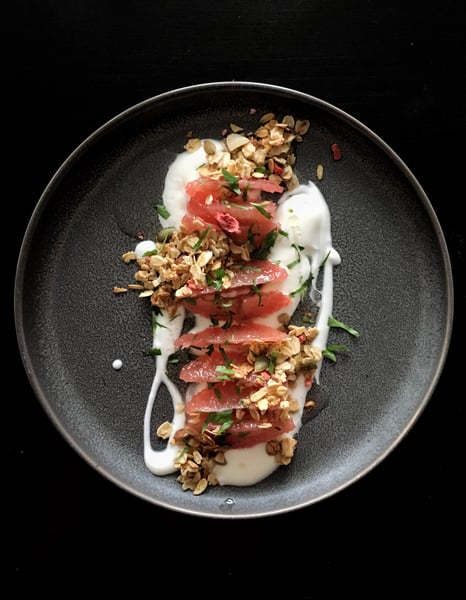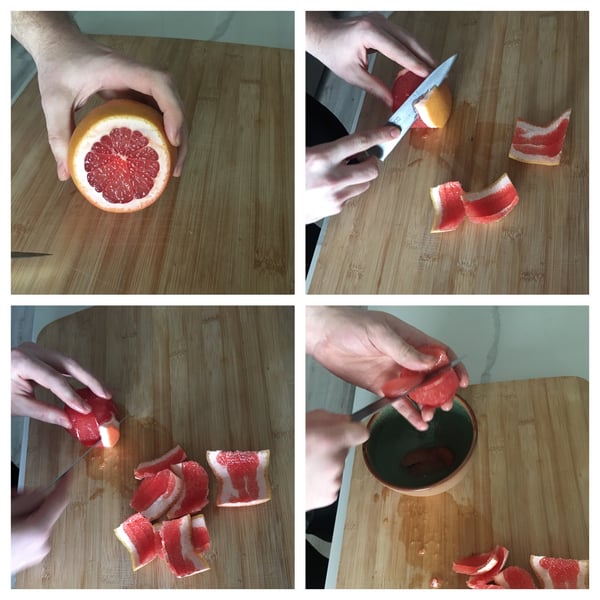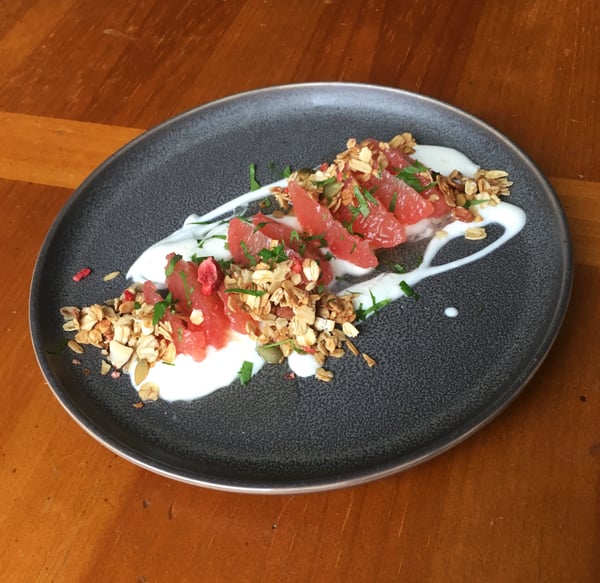You may (but probably don’t) recall from one of my previous blog posts that I love winter. While before I just had my own nostalgia to draw on to try to convince you to join me in my abject enjoyment of these cold dark months, this time I am equipped with a persuasive strategy. You see when axial tilt casts our hemisphere into the depths of winter something wonderful happens: Citrus comes into season. During the winter citrus is at the brightest and freshest it will get all year. It’s like Mother Nature knew we would need our spirits lifted so she packaged sunshine in hardy little fruits that could be shipped up to us in the north where our perma-gloom sky looks like The Matrix after humans have blotted out the sun.

You may be surprised to find out that citrus has a season at all. I don’t blame you. Its something we pretty much never have to think about living up here far away from where citrus is grown. You can find the big three (lemons, limes, oranges) at pretty much any grocery store all year round. They are considered staple produce. Its harder to notice on lemons and limes since we almost never eat them straight, but perhaps you’ve had a winter orange and taken note of how the aroma is more powerful, the flesh at once sweeter, and more balanced with a bracing acidity. Bypassing juicy to become downright succulent. This is the power of a citrus fruit at the peak of its season. But there’s even more to celebrate than just increased quality in our ho-hum year-round varieties, because citrus season also sees the availability of fruits you may have never tried, or even ever heard of before. All of which are delicious.
Some stores will stock up on a couple of novel varieties during winter; a couple types of grapefruit, a few new types of oranges, if you’re lucky some minneola tangerines, or satsumas, but there is a whole world out there to explore. You can avail yourself of the curiously floral lemony bergamot, or the absolutely adorable and delightful kumquat (or its close relative the Calamansi, a fruit native to the Philippines that is like a tangerine with the volume turned up to infinity). There are the brilliant yellow cuttlefish-looking tendrils of the Buddha’s Hand (used mostly for its incredibly aromatic zest), as well as the universally beloved Japanese Yuzu, the Makrut lime which has all the power and flavor of a traditional lime with the added dimension lemongrass rounding the profile, and alien-like finger limes which are filled with what look like tiny beads of citrus caviar. And all this only scratches the surface. There are varieties and hybrids innumerable. You can find all of these pretty readily online, so If you have even a passing interest in trying new citrus do yourself a favor this season and order something exciting. Be warned though, the best websites follow seasonality quite closely, so the variety you want may only be available for a couple weeks out of the year.
“All this talk about citrus is great, but Max” I can already hear you plaintively asking “what am I supposed to do with this stuff when I get it?”
I’m so glad you asked. Here’s a quick visual guide to one of my favorite ways to enjoy citrus that’s meant to be eaten out of hand: the supreme (pronounced ‘soo-PREHM’). Using this technique you cut the peel off, then go around the fruit and cut out the segments. It may seem foppish and unnecessary, but cutting the segments out of your citrus just makes it so much more straightforward to eat, and makes it much easier to add it to other things like salads. Plus it’s awful pretty.

For this, I have chosen a beautifully ripe Ruby Red Grapefruit - not the most exotic selection, but truly delicious when at its peak. I cut off each end so that I can see a small cross-section of all the segments, then put one cut side flat on my board following the curve of the fruit with my knife, carefully cutting off all the peel and pith. Once that’s done, I pick up the peeled grapefruit and gingerly finesse each segment from its outer membrane. A very sharp knife is incredibly helpful here.
After you’ve freed all the flesh you can use it however you like: Eat it with a spoon, add a little life to a dish of roasted root vegetables, or do what I did and make a little breakfast-friendly take on granola and yogurt with the grapefruit as the star. I used a cream-top yogurt, some walnut oil, a little pinch of salt, some granola for crunch, and finished it off with a little chopped parsley (which actually works surprisingly great with citrus, but mint is a safe bet too if parsley makes you cock an eyebrow). If your grapefruit is truly ripe, it wont even need that white sugar people are so fond of caking the top of their healthy breakfast with.

Almost all of our classes here at The Chopping Block use citrus in some way, but our upcoming Tiki Time classes will let you get up-close-and-personal with one of the most venerable of all citrus uses: the Mai Tai. Hope to see you there!












